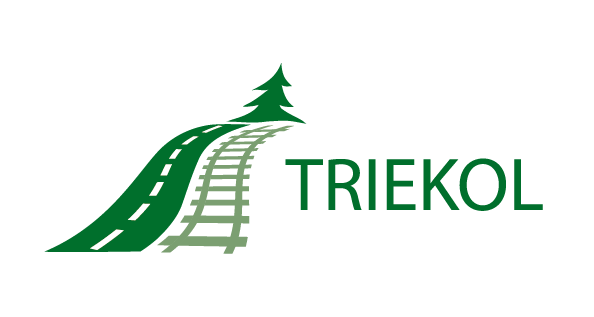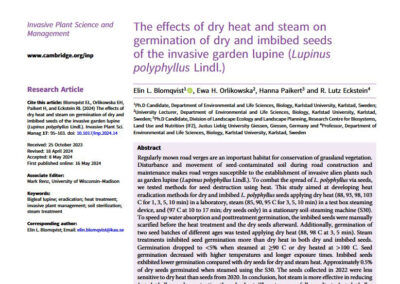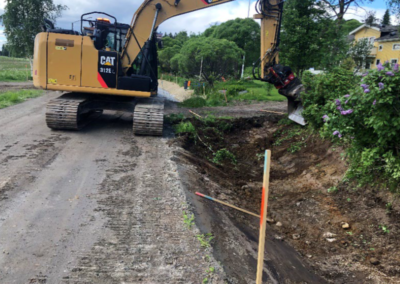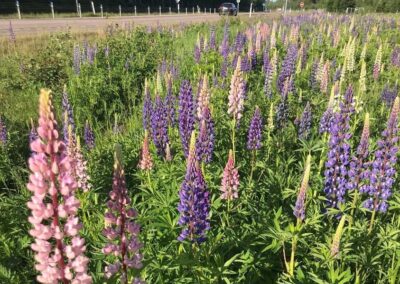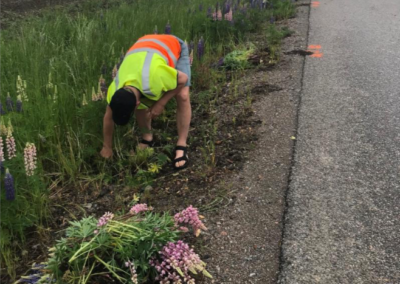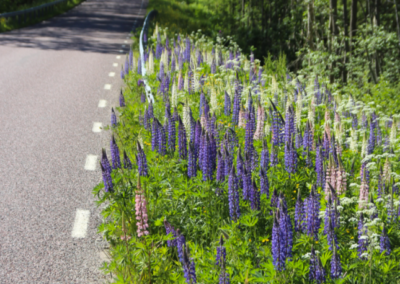Threatens biodiversity and spread in infrastructure habitats
Invasive alien species are increasingly perceived as a threat to biodiversity and to several other values and benefits in the landscape. Invasive alien plants (IAPs) are competitive and can quickly out-compete native species and destroy species-rich and biologically valuable environments.
IAPs can also jeopardize the technical function of road and railway facilities, with a risk of increased costs for vegetation and soil management.
It is important that IAP does not increase in abundance and spread into new areas. Unfortunately, roadsides and railway environments are often excellent dispersal paths and habitats for IAPs. The problem is further complicated by climate change, with more species now spreading northwards. With the responsibility for the national state-owned road and railway infrastructure, the Swedish Transport Administration’s handling of the issue of invasive alien species is important for the further development nationally.
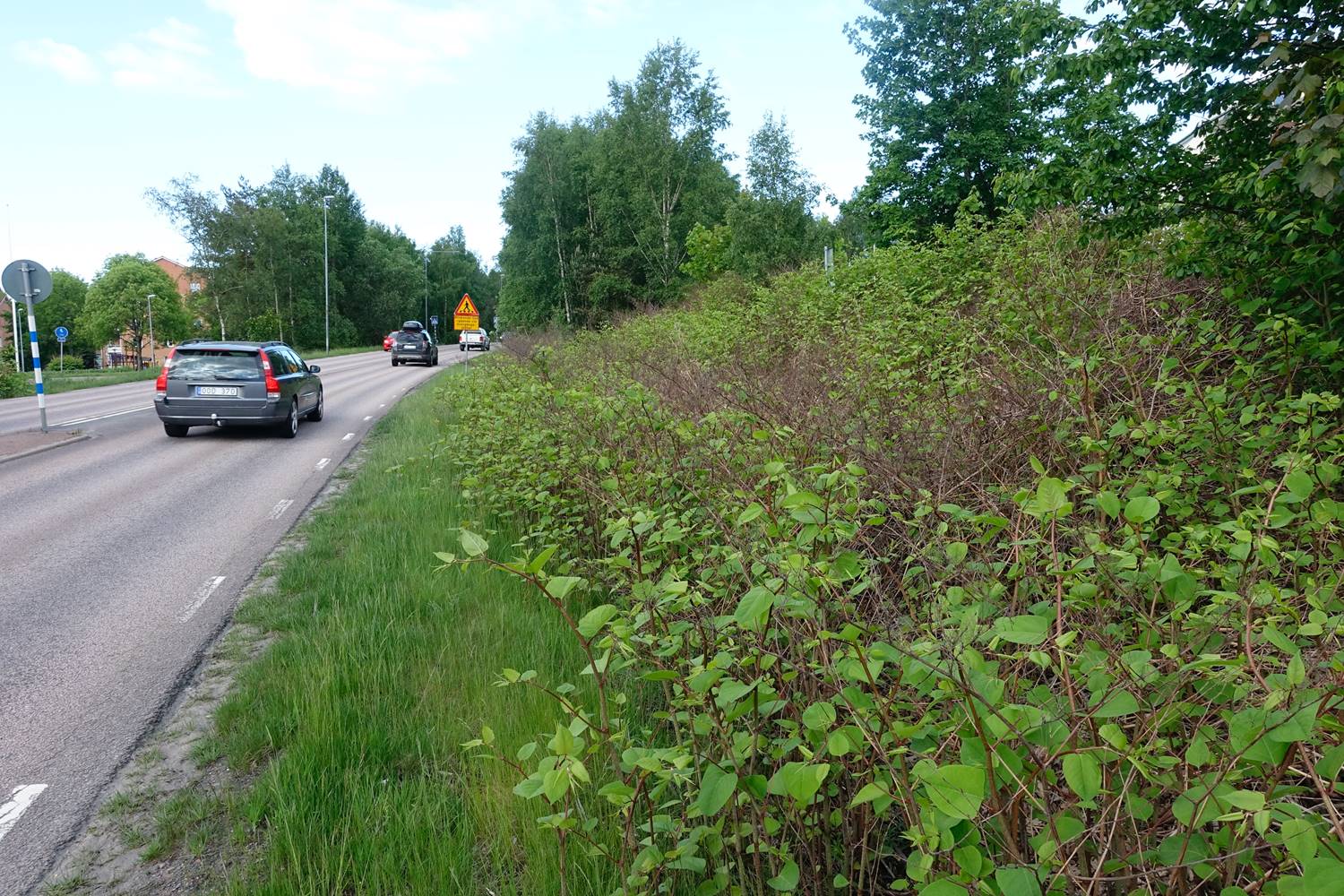
Japanese Knotweed (Reynoutria japonica).
Photo: Mats Lindqvist.
Knowledge is needed
In order to assess management needs and point out priority areas for management, knowledge is needed about the impact of IAP on the environmental qualities and functions of the facilities, and how that impact can be minimized at infrastructure maintenance and construction.
TRIIAS is conducted on the commission of and in collaboration with the Swedish Transport Administration’s working group for IAP. The research is structured according to the following activity areas:
I) Planning
II) Control
III) Soil management
The research in each of these areas tackles important questions concerning IAP. However, the areas are jointly planned and conducted, and and will therefore combined provide knowledge support throughout the problem complex.
Three activity areas
Read more about the planned research in the respective area (I-III) in the tabs below:
Planning
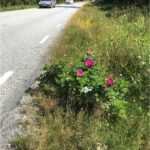 Invasive alien plants (IAP) outcompete other species, thereby deteriorating biologically valuable infrastructure habitats. Such effects strongly hamper the chances for the Swedish Transport Administration to reach targets for environmental quality. It can be assumed, however, that different IAP impose different effects on environmental quality, and also that effects differ between types of infrastructure habitats, for example between old and newer constructions.
Invasive alien plants (IAP) outcompete other species, thereby deteriorating biologically valuable infrastructure habitats. Such effects strongly hamper the chances for the Swedish Transport Administration to reach targets for environmental quality. It can be assumed, however, that different IAP impose different effects on environmental quality, and also that effects differ between types of infrastructure habitats, for example between old and newer constructions.
In order to assess needs for actions, and prioritise measures to where they have best effects, we need knowledge about how IAP influence biodiversity and environmental quality under different conditions, and how fast infrastructure habitats deteriorate. This knowledge needs to be translated into effects on the Transport Administration’s environmental targets. We will produce such knowledge based on a number of case areas and habitats. We will also model outcomes for environmental targets of different ambition levels for eradication.
It is always most cost efficient to eradicate invasive plants at early stages of establishment. In many areas, however, invasive plants are already so widespread that it is necessary to select areas to clear first. In order to make such choices, an overview is needed of the distribution and abundance of invasive plants. Along with this, there is a need for methods for prioritization, and management strategies for IAPs that are not yet eradicated. We will develop a model for planning of measures against invasive plants at scale of road management district (driftområde).
IAP is a landscape-scale problem that involves several actors. Collaboration between actors therefore is essential. We will explore the arena for work with invasive plants in terms of actors and legislation, as a base for strategies and routines for the Transport Administration’s collaboration with other actors.
Control
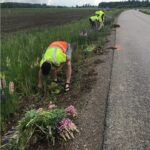 There is a great need to develop a toolbox with cost-effective control methods that can be used under different conditions and for different species. Control methods will be studied through knowledge compilation, follow-up and analysis of control measures in the Swedish Transport Administration’s operations and controlled trials.
There is a great need to develop a toolbox with cost-effective control methods that can be used under different conditions and for different species. Control methods will be studied through knowledge compilation, follow-up and analysis of control measures in the Swedish Transport Administration’s operations and controlled trials.
The need for new knowledge is judged to be greatest for Garden Lupine (Lupinus polyphyllus) and Canadian Goldenrod (Solidago canadensis), but the Swedish Transport Administration’s ongoing control measures of other species, such as Giant Hogweed (Heracleum mantegazzianum) and Indian Balsam (Impatiens glandulifera), will also be studied and evaluated.
In order to be able to prioritize and plan actions, as well as to evaluate how well control measures may reduce the abundance of IAP in transport infrastructure, knowledge is needed about where in the infrastructure IAP are distributed. One of the project goals are the development of cost-effective inventory methods, thus a method where both the time requirements and the accuracy of the methods is evaluated and optimised. It is likely that many IAP will spread along the transport network through maintenance measures. Therefore, we will perform studies on IAP dispersal and establishment through mowing and ditch clearing.
Soil management
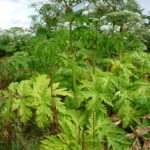 New construction and remodelling projects create new surfaces where IAP can easily establish, and these areas are often invaded, especially by garden lupine. Thus, these areas may become distribution cores for IAP in the transport network. At the same time, IAP prevent the possibilities of creating biologically valuable environments in the new facilities. We will study the causes for IAP establishment and methods for preventing establishment, through a number of case studies (investment projects that are ongoing and/or well documented).
New construction and remodelling projects create new surfaces where IAP can easily establish, and these areas are often invaded, especially by garden lupine. Thus, these areas may become distribution cores for IAP in the transport network. At the same time, IAP prevent the possibilities of creating biologically valuable environments in the new facilities. We will study the causes for IAP establishment and methods for preventing establishment, through a number of case studies (investment projects that are ongoing and/or well documented).
Despite careful handling of IAP in project areas and well-executed control measures in projects and maintenance operations, there is a risk that individual plants will establish unintentionally through seeds or plant parts. Therefore, project areas and other places where control measures have been conducted or soil has been brought in, need to be monitored so that complementary control measures can be taken at an early stage. Methods for monitoring need to be based on knowledge of e.g. how long the IAP continues to emerge from the seed bank. We will develop methods for follow-up studies of soil management in project areas and of control measures.
IAP-contaminated soil masses pose a major problem. They may be very costly due to the need for safe handling, legal requirements, and expensive transport. During transport, there is a risk that soil masses and machines spread IAPs to new areas. There is a great need for methods of depositing contaminated soil masses locally in project areas, which is also being tested in many projects. Another way is to cover IAP biomass on-site, that is, without creating problematic soil masses at all. We will study these issues and also the problem of IAP-contaminated soil masses in ditch cleaning and IAP control in maintenance.
In projects with soil mass deficits, there is a risk that new masses will introduce IAP. Criteria for classifying soil masses as IAP-free are poorly developed, which hampers the possibilities for a systematic certification system. Additionally, IAP may also be spread with machines, and there is, therefore, a need for certification systems for contractors. Through a number of cases, we study the chain from production, via transport to delivery of soil masses. Risk factors, risk locations (eg quarries), and crucial steps in management are identified. We use these studies to propose quality criteria for each step in the chain, as a basis for an overall system for certification.
Publikationer och presentationer
TRIIAS has resulted in:
Organisation
TRIIAS is funded by Trafikverket (STA) and cover the period from 2021 to 2025.
The research project is coordinated by SLU Swedish Biodiversity Centre, CBM and is an independent part of TRIEKOL.
The program group consists of a program manager and a deputy program manager. The staffing of the respective sub-projects involves researchers and staff from other universities, authorities and consulting firms. The program also has contact with chosen representatives from the STA.
Contact
For inquiries concerning TRIIAS, please contact one of the program directors of TRIEKOL.
